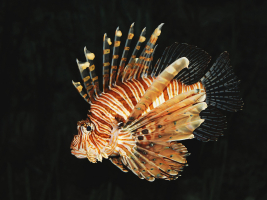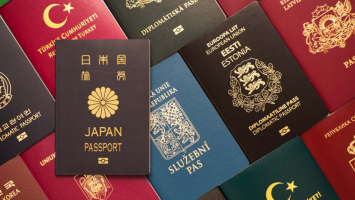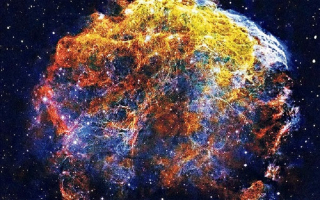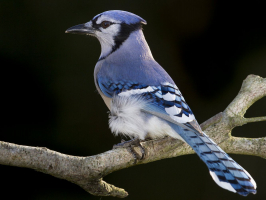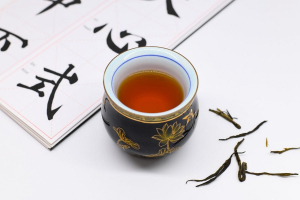Top 10 Most Dangerous Snakes In The World
The animal world is extremely diverse and rich. Many animals are impressed by their beautiful appearance, and friendly personality, there are also very ... read more...dangerous animals. Let's find out with Toplist the most dangerous snakes in the world!
-
One of the most dangerous snakes in the world is the inland taipan which is a species of highly venomous snake in the family Elapidae, sometimes known as the western taipan, the small-scaled snake, or the terrible snake. Central and eastern Australia's semi-arid regions are home to the species. These areas were home to Aboriginal Australians who gave the snake the name dandarabilla. Frederick McCoy and William John Macleay first described it in 1879, and then it was unknown to scientists for the following 90 years. No other specimens were discovered, and no new information on this species was added until it was rediscovered in 1972.
The inland taipan's venom is by far the most deadly of any snake, even more so than that of sea snakes, according to the median lethal dose value in mice. It also has the most toxic venom of any reptile when tested on human heart cell culture. Because the inland taipan is an expert mammal hunter, it has developed venom that is specifically designed to kill warm-blooded animals. One bite is thought to have enough lethality to kill at least 100 adult people. It is a very swift and agile snake that can strike quickly and accurately, frequently striking many times in one attack, and it almost always envenomates.
Out of all the snakes found here, the inland taipan has the lowest LD50 rating—a startling 0.01mg—and is arguably the most venomous snake in the entire world. The inland taipan actually only injects 44–110 mg of venom per bite, but this is sufficient to kill 289 people. It has the ability to bite repeatedly in addition to envenomating more than 80% of the time.
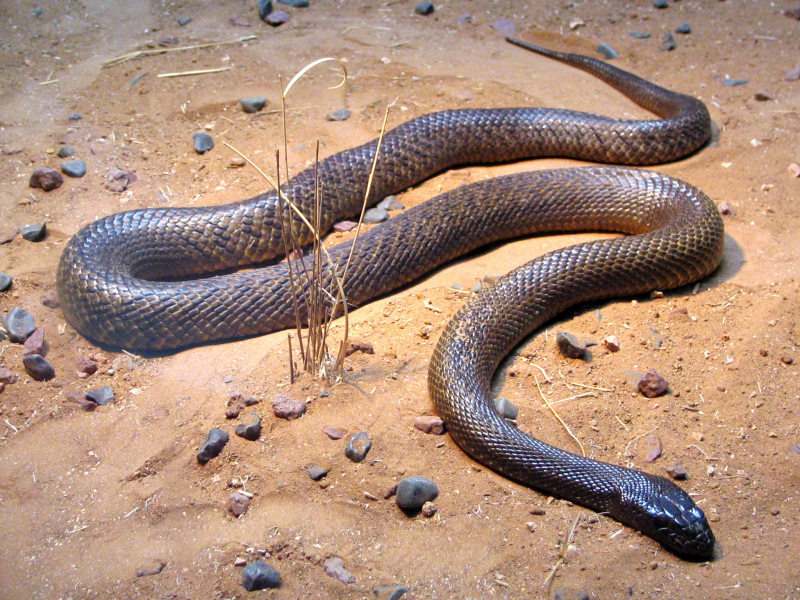
Photo: wikipedia 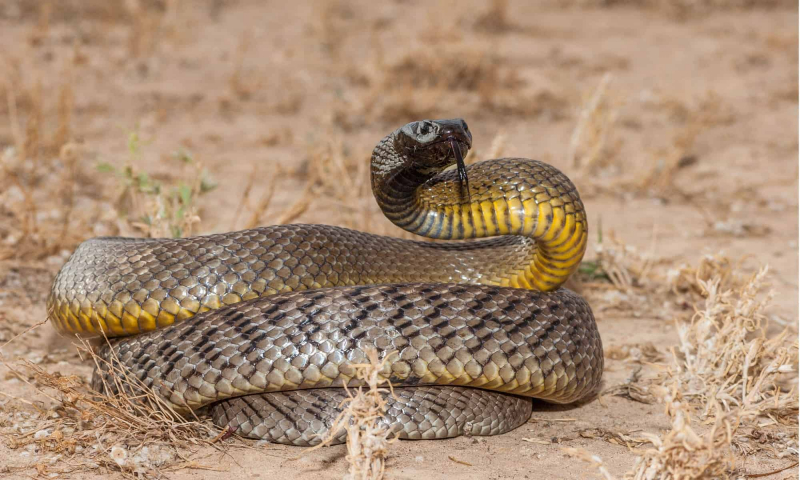
Photo: a-z-animals.com -
The Coastal Taipan, a type of highly venomous snake in the family Elapidae, is also known as the coastal taipan. The species, which Wilhelm Peters first described in 1867, is indigenous to the coasts of northern and eastern Australia as well as the island of New Guinea. The coastal taipan, the second-largest venomous snake in Australia, averages about 2m in length, with the longest specimens reaching 2.9 m. Its underparts are paler than its upperparts, which are light olive or reddish-brown. The International Union for Conservation of Nature rates the snake as a species of least concern.
Although its name would imply that it primarily frequents coastal areas, the coastal taipan is found all around Australia. This very venomous snake, sometimes known as the common taipan, may kill up to 56 people with just one bite! The coastal taipan is undoubtedly a snake to stay away from because of its exceptionally low LD50 value and the relatively modest amount of venom it injects in comparison to other dangerous snakes.
The neurotoxins in the venom of coastal taipans may permanently change your body if you are bitten by one. In fact, respiratory paralysis and kidney damage could still happen to those who sought medical attention within two hours of being bitten. Though there have been instances where victims have passed away from the bite in under an hour, therefore it's imperative to get medical help right once if you suffer from this snakebite!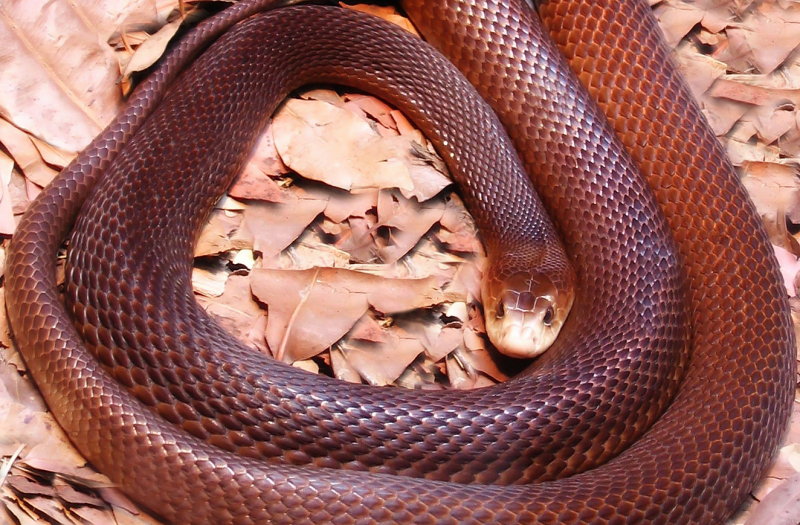
Photo: wikipedia 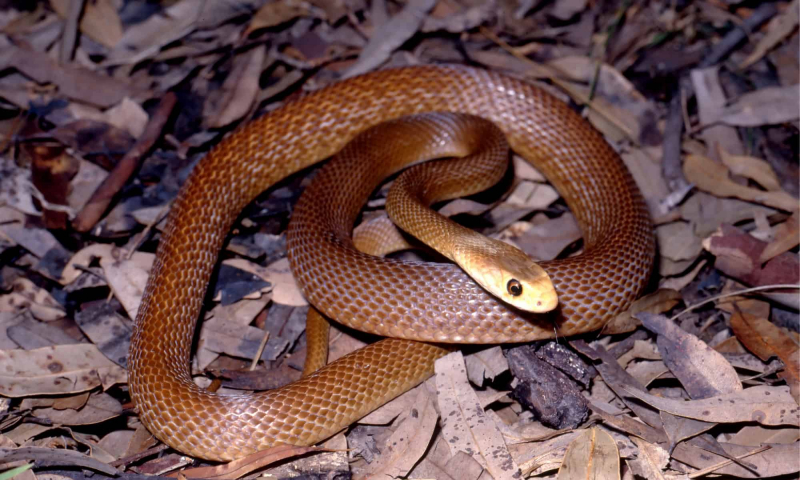
Photo: a-z-animals.com -
The forest cobra, scientific name Naja melanoleuca, is a type of poisonous snake in the family Elapidae. It is sometimes referred to as the black cobra and the black and white-lipped cobra. The native habitat of the species is primarily in central and western Africa. With a record length of 3.2 meters, it is the largest true cobra species. Despite favoring environments in lowland forests and wet savannas, this cobra is quite versatile and can be found in drier temperatures within its range.
It is frequently regarded as semi-aquatic and a very good swimmer. The forest cobra is a generalist in its eating habits and consumes a wide range of foods, including small mammals, other reptiles, and huge insects. This kind of snake is alert, tense, and regarded as being extremely dangerous. It will adopt the standard cobra warning stance when cornered or threatened, raising its forebody off the ground, extending a narrow hood, and hissing loudly. Due to a number of reasons, human bites from this type of African cobra are less frequent than those from other African cobras, but they are still a serious emergency.
A cousin of the king cobra is more than capable of killing a person in a single bite. The forest cobra may actually kill 65 adults in one bite because of its powerful bite and huge venom production. This is due to both its low LD50 score of 0.22 and the large volume of venom it is able to inject. The forest cobra is one of the most potent venomous snakes, with bites averaging 570 mg and sometimes up to 1100 mg.
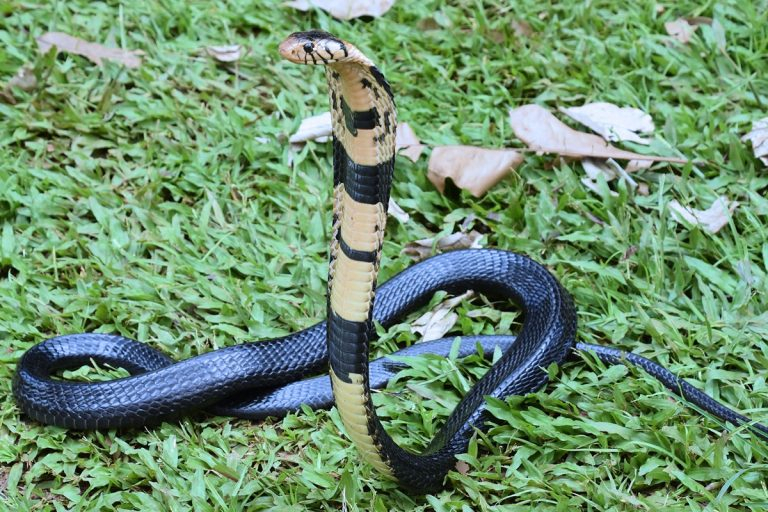
Photo: news.mongabay.com 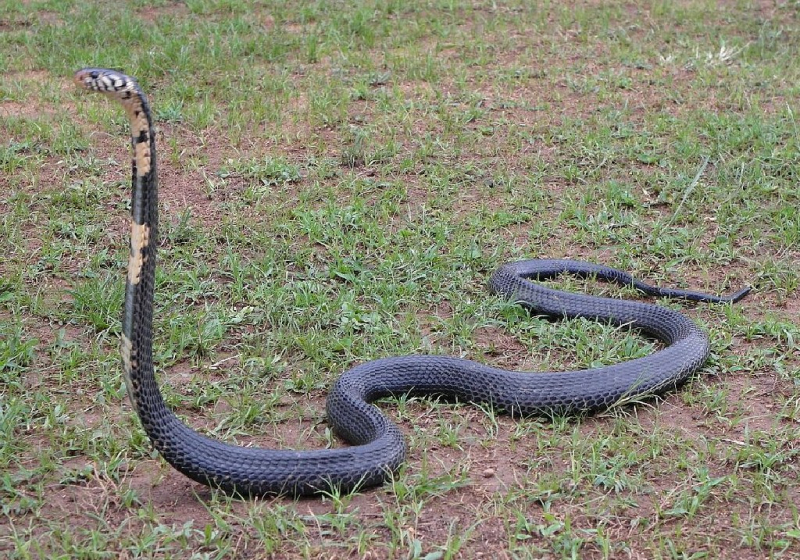
Photo: flickr.com -
A type of venomous sea snake is the Dubois' sea snake. Papua New Guinea, New Caledonia, and the northern, eastern, and western coasts of Australia—specifically, the Coral Sea, Arafura Sea, Timor Sea, and the Indian Ocean—are all included in its geographic range. The coral reef flats, sandy and silty sediments that include seaweed, invertebrates, and corals or sponges that can act as shelter are where they reside at depths of up to 80 meters.
It does not lay eggs; instead, it gives birth. They have a moderate level of aggression, which means they will bite if threatened but not proactively. The 0.43 mg of venom and the 1.8 mm long fangs are relatively short for snakes. Being a twilight-active species, Dubois’s Sea Snake is most active at dawn and dusk. Adults can reach a length of 148 cm, but they normally measure 80 cm. The body is a little bit narrower than the head.
The Dubois' sea snake is a very venomous snake that inhabits coral reef flats in the Coral Sea, Arafura Sea, Timor Sea, and the Indian Ocean. Although there aren't many reports of this snake killing anyone, its bite is exceedingly lethal. On the other hand, you may imagine that this sea snake, if provoked, could kill a passing scuba diver with a single bite with an LD50 level of 0.04mg! Given the size of our oceans and the fact that the Dubois sea snake is the most poisonous sea snake in the world, very few people die from sea snake bites.
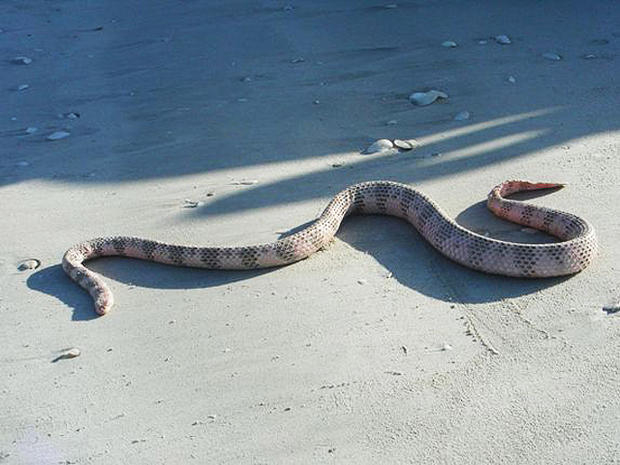
Photo: reptilefact.com Video: https://www.youtube.com/watch?v=MV36nTw9EX8 -
A kind of very venomous snake in the family Elapidae is the eastern brown snake, sometimes known as the common brown snake. The native range of the species includes southern New Guinea, and eastern and central Australia. In 1854, André Marie Constant Duméril, Gabriel Bibron, and Auguste Duméril published the first account of it.
The adult eastern brown snake is thinly built and can reach a length of 2 m (7 ft). Its underside has a light cream-yellow color that is frequently speckled with orange or grey. Its surface varies in color from pale brown to black. The eastern brown snake can be found in most settings, with the exception of deep woods. It is frequently seen on farms and on the outskirts of cities because house mice, its primary prey, live there. It is an oviparous species. Although its status in New Guinea is unclear, the International Union for Conservation of Nature classifies the snake as a species of least concern.
Due to the severity of its venom, the eastern brown snake is ranked as the second most venomous terrestrial snake. The majority of snakebite fatalities in the area are caused by this snake, which is found in Australia. This is because only 3 mg of its venom is needed to kill a typical human, but it also has to do with where this snake lives. It prefers to hunt in populous locations, thus it encounters people more frequently than it ought to!
Although the eastern brown snake's size influences how much venom it injects, a juvenile bite is nonetheless just as lethal. The venom of eastern brown snakes primarily targets coagulation factors in the body, changing how readily your blood clots. It is recommended to handle this swift snake with caution because internal hemorrhage and cardiac collapse are frequent causes of death.
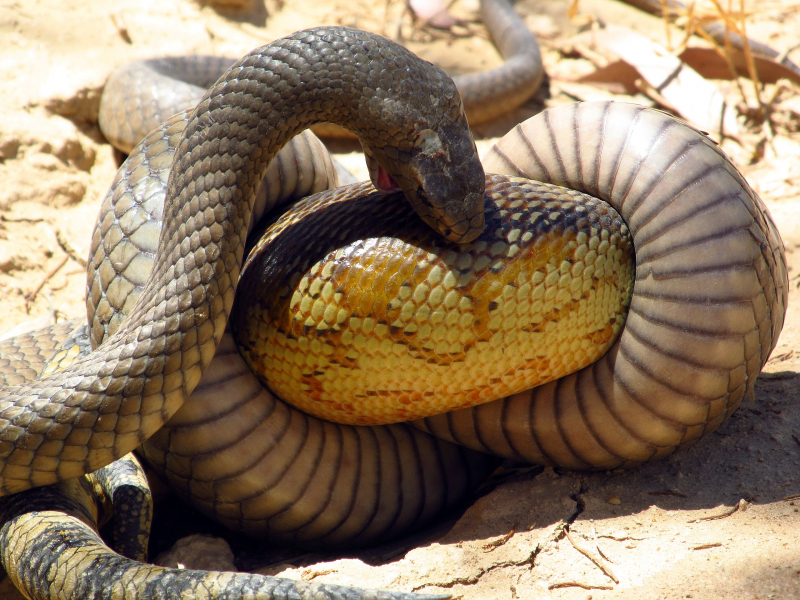
Photo: wikipedia 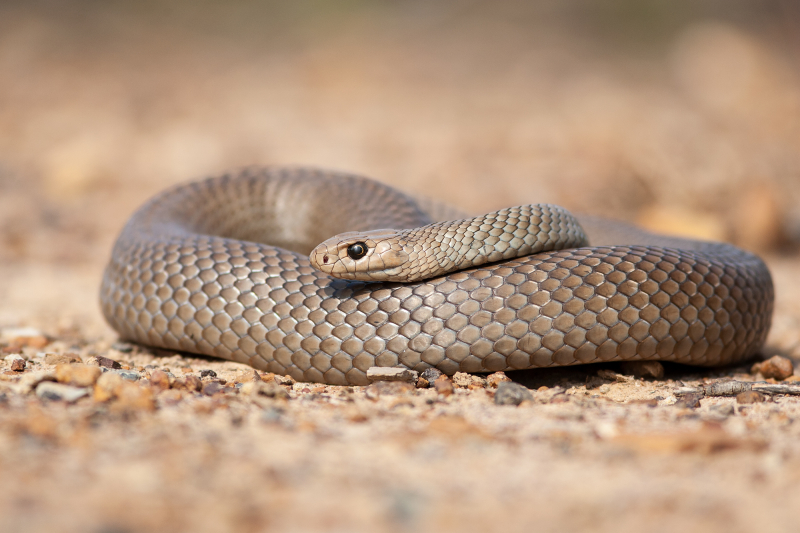
Photo: inaturalist.org -
The Elapidae family of snakes includes the very venomous black mamba species. A portion of sub-Saharan Africa is home to it. It is the second-longest venomous snake after the king cobra and was officially described for the first time by Albert Günther in 1864. The species lives in savannah, woodland, rocky slopes, and in some areas, deep forest. It is both terrestrial and arboreal. It preys on small mammals and birds throughout the daytime. It can go a short distance at speeds of up to 16 km/h under suitable conditions. Few natural predators exist for adult black mambas.
In regards to the Black Mamba's bite, this snake's fangs contain a particularly deadly sort of venom. The average individual dies 6–14 hours after being bitten, despite the fact that it may inject 100–400 mg of venom in a single bite. The majority of symptoms actually appear in as short as ten minutes, which makes this snake extremely dreadful. As if all of this weren't horrible enough, the Black Mamba's bite also includes analgesic properties that give its victims the impression that they haven't been bitten or that the bite isn't as severe as it is. This snake is among the deadliest and most poisonous in the entire globe. Black Mamba is one of the most dangerous snakes in the world.
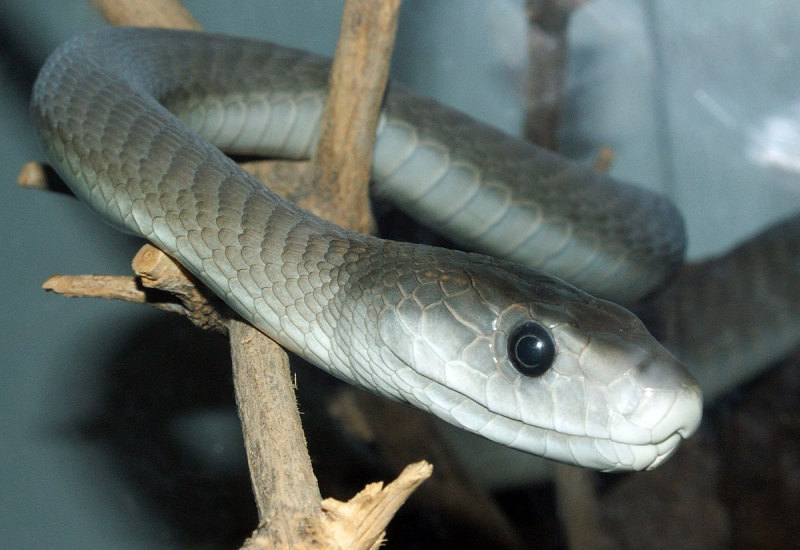
Photo: wikipedia.org 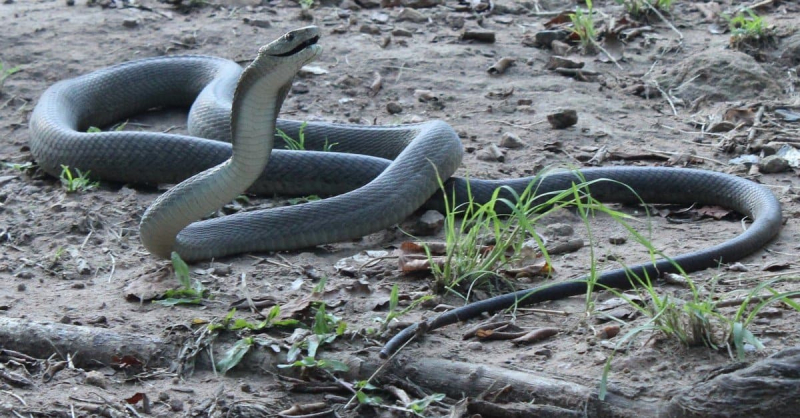
Photo: a-z-animals.com -
The next position on the list of the most dangerous snakes in the world is Russell’s Viper. One of India's "big four" snakes and a poisonous member of the Viperidae family, Russell's viper is indigenous to the Indian subcontinent. It was named after Patrick Russell, who wrote about it in his 1796 book An description of Indian serpents, collected on the coast of Coromandel, and was detailed by George Shaw and Frederick Polydore Nodder in 1797.
The bite of this snake is exceptionally lethal because 40-70 mg of Russell's viper venom is sufficient to kill the ordinary person! In actuality, more people are killed by Russell's vipers in India, Burma, and Sri Lanka than by any other snake. This snake hunts in densely populated regions and can be found in open grasslands all over the Indian subcontinent. The Russell's viper is not only extremely deadly because of its proximity, but it also possesses a bite to back it up.
The Russell's viper commonly bites people, causing localized swelling and bleeding. Depending on the intensity, this snake's envenomation can cause unpleasant side effects for up to two weeks. If untreated, statistics for bites suggest that more than 30% of victims experience kidney failure and pass away.
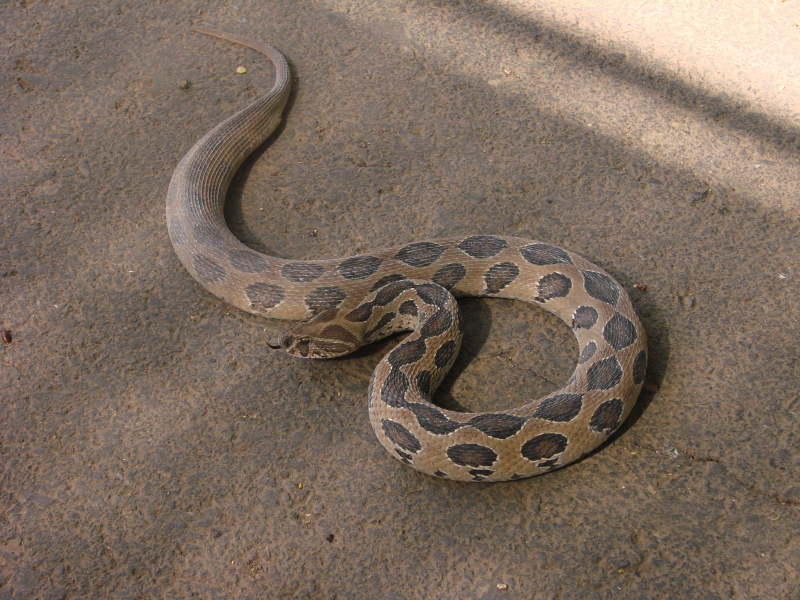
Photo: wikipedia 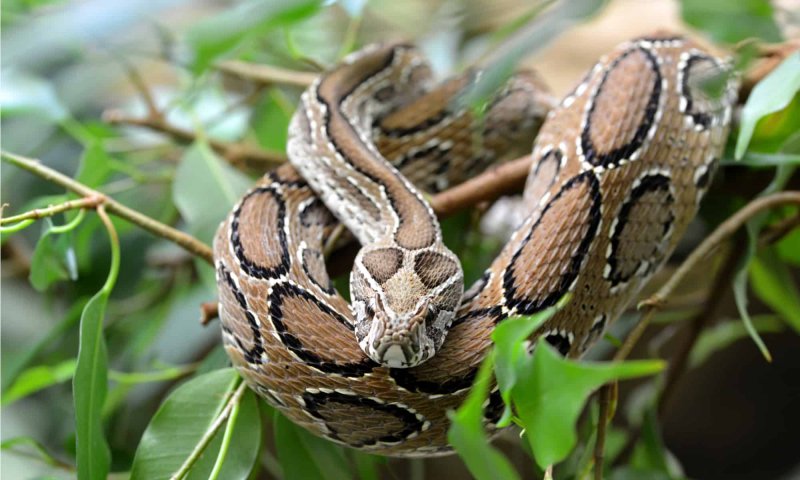
Photo: a-z-animals.com -
Boomslang is a poisonous snake in the Colubridae family and one of the few species that is clearly threatening to people. This somewhat slender snake inhabits savannas all over sub-Saharan Africa and reaches a maximum length of about 1.8 meters. The forepart of the body frequently extends motionlessly into the air while it waits in a shrub or tree for chameleons and birds to approach.
Its body and eye colors vary greatly, and it has exceptional camouflage abilities. The boomslang may strike after inflating its neck in protection to reveal the dark skin underneath its scales. Although it has rear fangs, they are relatively far forward in the mouth. In modest doses, the venom can kill humans and cause hemorrhages.
Most of Africa is home to the boomslang, which is mostly found in Swaziland, Botswana, Namibia, Mozambique, and Zimbabwe. The boomslang, which only injects 1 to 8 milligrams at a time, has a tremendously potent bite, as you can undoubtedly see. Its LD50 concentration is so low, nevertheless, that it would only require one bite to be fatal.
The boomslang is infamous for biting individuals and not immediately showing any negative side effects. Many boomslang snakebite victims believe that they were just exposed to a dry bite or nonlethal dose. Boomslang venom inhibits blood from coagulating inside the body, which leads to internal bleeding and even hemorrhaging in important organs. However, the negative effects appear after it is already too late.
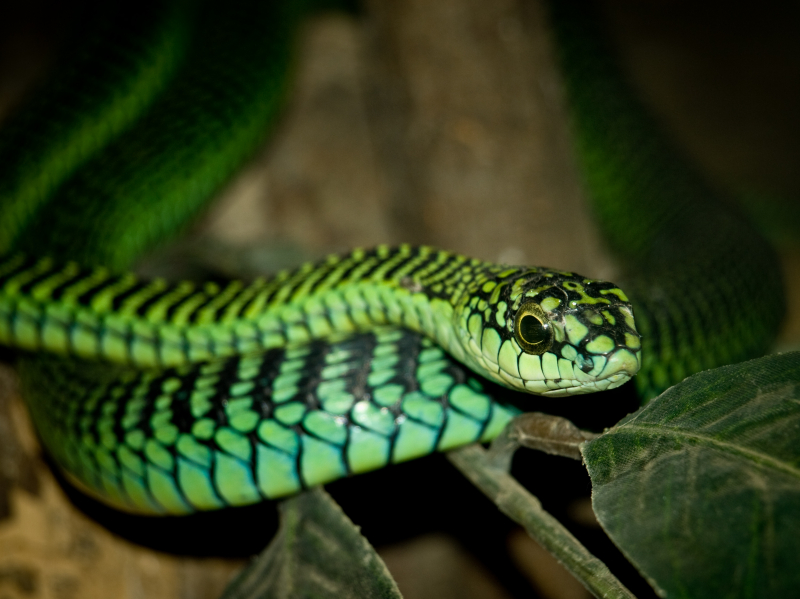
Photo: wikipedia Video: https://www.youtube.com/watch?v=cP5kqH_N0u8 -
The king cobra is an elapid species of poisonous snake that is exclusive to the rainforests of Southern and Southeast Asia. The only cobra in the genus Ophiophagus, it may be identified from other cobras primarily by its size and neck markings. With an average length between 3.18 and 4 meters and a maximum length of 5.85 meters, the king cobra is the longest venomous snake in the world. Its skin tone varies according to the habitat, ranging from unbroken brownish-grey to black with white streaks. It mostly preys on snakes, even members of its own species. It rarely hunts other vertebrates like rodents and lizards, in contrast to other snakes.
Given the high concentration of neurotoxins and cytotoxins present, research indicates that king cobra bites can cause a person's death in as little as 30 minutes. Additionally, this specific snake frequently bites higher up on the body due to its length. Many cobras display unusual defensive postures that cause them to rise into the air with their hoods fanned in a menacing manner. The king cobra is no exception; these snakes frequently attack and latch onto anything that might be posing a threat to them.
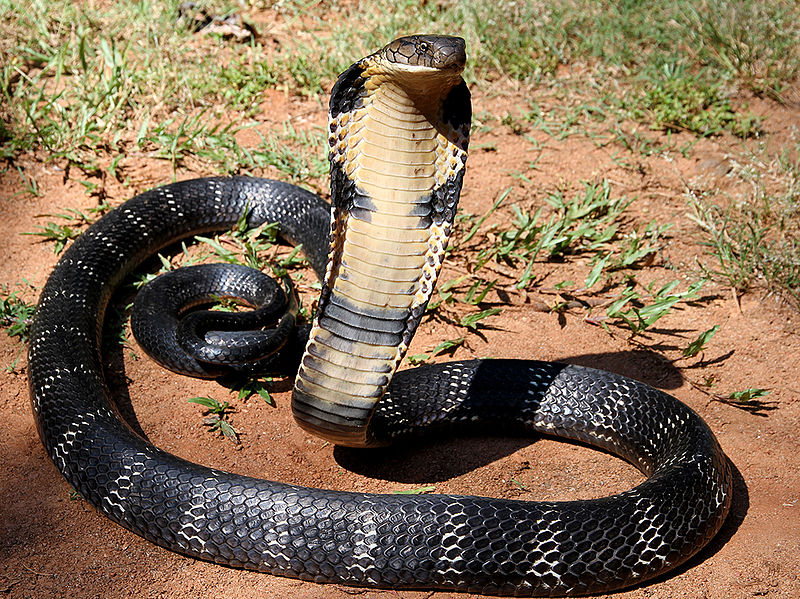
Photo: wikipedia 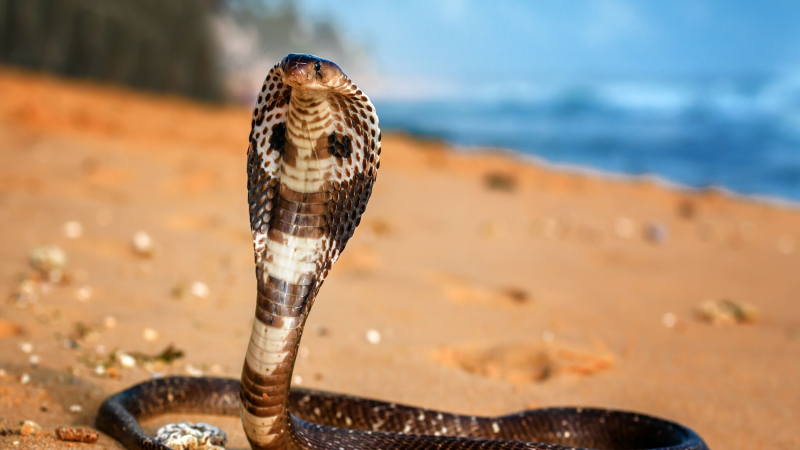
Photo: thoughtco.com -
The next position on the list of the most dangerous snakes in the world is Fer-de-lance, any of a number of very poisonous viper snakes that can be found in tropical America and tropical Asia in a variety of environments, from cultivated lands to woods. The fer-de-lance, often referred to as Barba Amarilla in Spanish, is a pit viper, which may be identified by a tiny sensory pit located between each eye and nostril. It typically grows to a length of between 1.2 and 2 meters and has a broad triangular head. It is gray or brown and has a pattern of diamond-shaped marks with black edges that are frequently surrounded by lighter hues. Humans who are bitten by it risk dying.
One of the most dangerous pit vipers is the fer-de-lance, which may be found in South and Central America, Mexico, and Brazil. This snake, which can grow to be 8 feet long and weighs 10 to 13 pounds on average, is common in inhabited areas, which is probably why it has been blamed for so many bites.
The terciopelo bites with an average of 500 to 1500 mg of venom each bite, depending on the species. Given that it takes 3 mg to kill a mouse, it stands to reason that this snake, which can typically kill 6 people in a single bite, is just as harmful to humans.
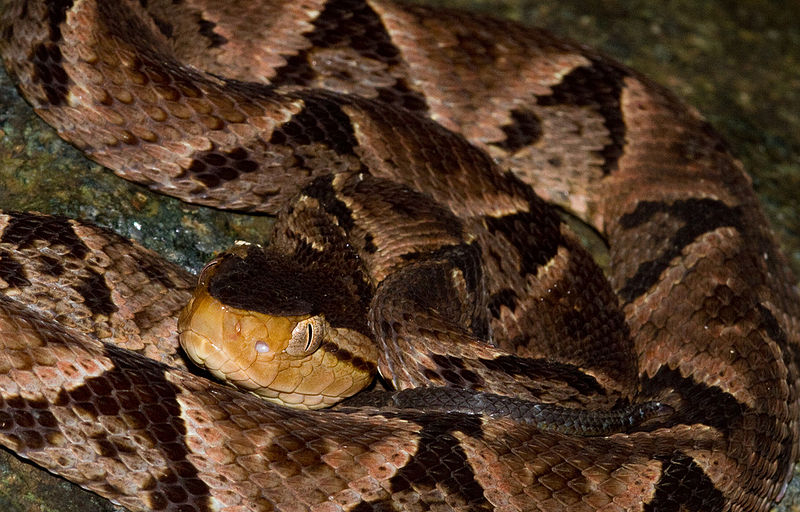
Photo: wikipedia 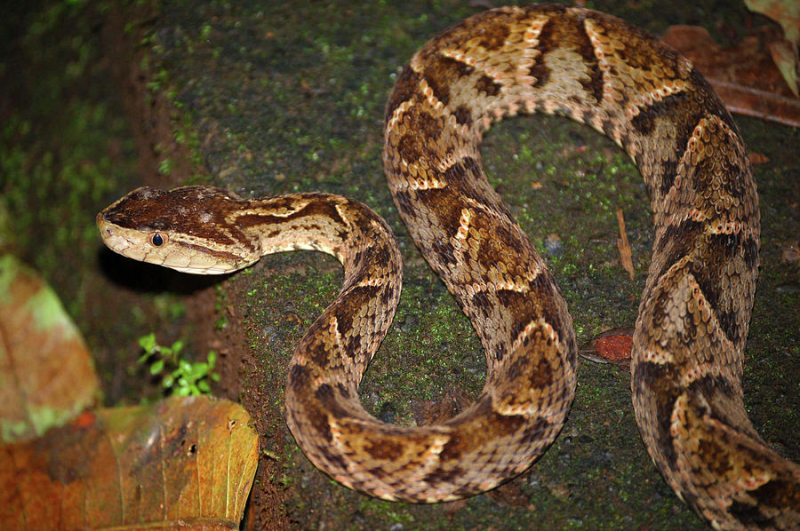
Photo: pixels.com














